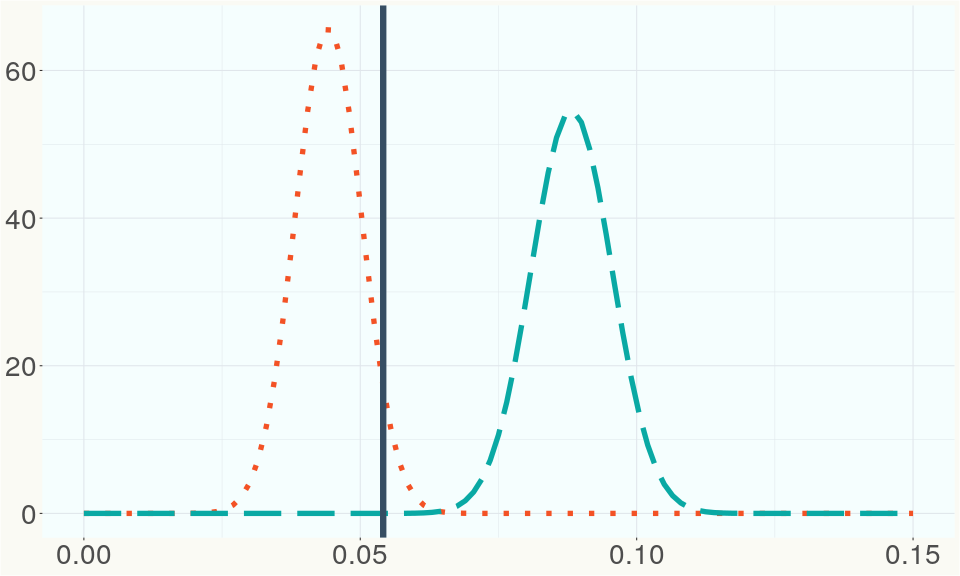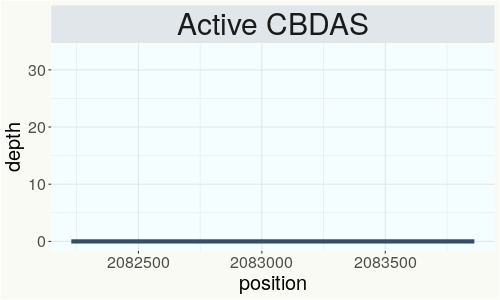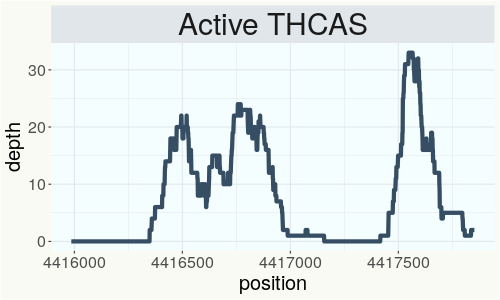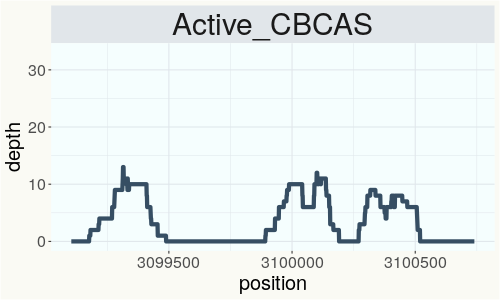Gold Cracker
RSP 11048
Grower: Jeff's Detail
General Information
- Accession Date
- January 7, 2018
- Reported Plant Sex
- Female
- Report Type
- StrainSEEK v2 3.2Mb
- DNA Extracted From
- Stem
The strain rarity visualization shows how distant the strain is from the other cultivars in the Kannapedia database. The y-axis represents genetic distance, getting farther as you go up. The width of the visualization at any position along the y-axis shows how many strains there are in the database at that genetic distance. So, a common strain will have a more bottom-heavy shape, while uncommon and rare cultivars will have a visualization that is generally shifted towards the top.
Chemical Information
Cannabinoid and terpenoid information provided by the grower.
Cannabinoids
No information provided.
Terpenoids
No information provided.
Genetic Information
- Plant Type
- Type I
File Downloads
The bell curve in the heterozygosity visualization shows the distribution of heterozygosity levels for cannabis cultivars in the Kannapedia database. The green line shows where this particular strain fits within the distribution. Heterozygosity is associated with heterosis (aka hybrid vigor) but also leads to the production of more variable offspring. When plants have two genetically different parents, heterozygosity levels will be higher than if it has been inbred or backcrossed repeatedly.
The ratio of reads mapped to Y-contigs to reads mapped to the whole Cannabis genome (Y-ratios) has been demonstrated to be strongly correlated with plant sex typing. This plot shows the distribution of Y-ratios for all samples in our database which were sequenced with the same method (panel or WGS) as this sample and where this sample falls in the distribution.

This chart represents the Illumina sequence coverage over the Bt/Bd allele. These are the three regions in the cannabis genome that impact THCA, CBDA, CBGA production. Coverage over the Active CBDAS gene is highly correlated with Type II and Type III plants as described by Etienne de Meijer. Coverage over the THCA gene is highly correlated with Type I and Type II plants but is anti-correlated with Type III plants. Type I plants require coverage over the inactive CBDA loci and no coverage over the Active CBDA gene. Lack of coverage over the Active CBDA and Active THCA allele are presumed to be Type IV plants (CBGA dominant). While deletions of entire THCAS and CBDAS genes are the most common Bt:Bd alleles observed, it is possible to have plants with these genes where functional expression of the enzyme is disrupted by deactivating point mutations (Kojoma et al. 2006).



This chart represents the Illumina sequence coverage over the CBCA synthase gene.

Variants (THCAS, CBDAS, and CBCAS)
No variants to report
Variants (Select Genes of Interest)
| PKSG-2a | c.67T>A | p.Phe23Ile | missense variant | moderate | contig700 | 1945567 | A/T | |
| PKSG-2b | c.31A>T | p.Thr11Ser | missense variant | moderate | contig700 | 1951851 | T/A | |
| PKSG-4b | c.496A>G | p.Lys166Glu | missense variant | moderate | contig700 | 2721177 | T/C | |
| PKSG-4b | c.489delT | p.Phe163fs | frameshift variant | high | contig700 | 2721183 | CA/C | |
| PKSG-4b | c.485A>G | p.Lys162Arg | missense variant | moderate | contig700 | 2721188 | T/C | |
| aPT1 | c.406A>G | p.Ile136Val | missense variant | moderate | contig121 | 2839605 | A/G |
Nearest genetic relatives (All Samples)
- 0.015 Gold Cracker (RSP11041)
- 0.146 BLACK JACK (RSP11346)
- 0.148 Durban Poison #1 (RSP11013)
- 0.152 Black Jack (RSP10603)
- 0.157 RKM-2018-016 (RSP11108)
- 0.158 RKM-2018-025 (RSP11117)
- 0.159 Durban Poison #1 (RSP10996)
- 0.168 Liberty Haze (RSP11000)
- 0.169 Durban Poison (RSP11014)
- 0.172 Durban Poison (RSP10998)
- 0.173 Domnesia (RSP11184)
- 0.177 Serious Happiness (RSP10763)
- 0.181 RKM-2018-027 (RSP11119)
- 0.181 OR 05MAY2017 (RSP10940)
- 0.185 Erez 05MAY2017 (RSP10942)
- 0.191 Alaska USA (RSP11171)
- 0.192 White Chronic (RSP11220)
- 0.192 Durban Poison (RSP11226)
- 0.193 UnObtanium (RSP11611)
- 0.194 Suver Haze (RSP11364)
Most genetically distant strains (All Samples)
- 0.452 Cherry Blossom (RSP11323)
- 0.443 Cherry Blossom (RSP11311)
- 0.426 Feral (RSP11205)
- 0.420 Cherry Blossom (RSP11328)
- 0.420 Cherry Blossom (RSP11314)
- 0.420 Unknown--Cherry Wine---001- (RSP11268)
- 0.420 Cherry Blossom (RSP11318)
- 0.407 Cherry Blossom (RSP11334)
- 0.407 Cherry Blossom (RSP11309)
- 0.405 Cherry Blossom (RSP11312)
- 0.402 Feral (RSP10891)
- 0.402 CS (RSP11208)
- 0.399 Feral (RSP11206)
- 0.393 Cherry Blossom (RSP11298)
- 0.392 Unknown--Cherry Wine---002- (RSP11269)
- 0.392 Feral (RSP10890)
- 0.392 Cherry Blossom (RSP11317)
- 0.392 Cherry Blossom (RSP11274)
- 0.391 80E (RSP11213)
- 0.389 Feral (RSP10892)
Nearest genetic relative in Phylos dataset
- Overlapping SNPs:
- 84
- Concordance:
- 62
Nearest genetic relative in Lynch dataset
- Overlapping SNPs:
- 6
- Concordance:
- 6
Blockchain Registration Information
- Transaction ID
-
06cdde3efe1e04e6
88ca44fdb12464e1 e332fcc4d8b61a40 7e9b9195183a9018 - Stamping Certificate
- Download PDF (862.0 KB)
- SHASUM Hash
-
8efaa3ed9416538099e83b7810c2a9a7 d3a615d2edc3a8fc 34798b366a109976